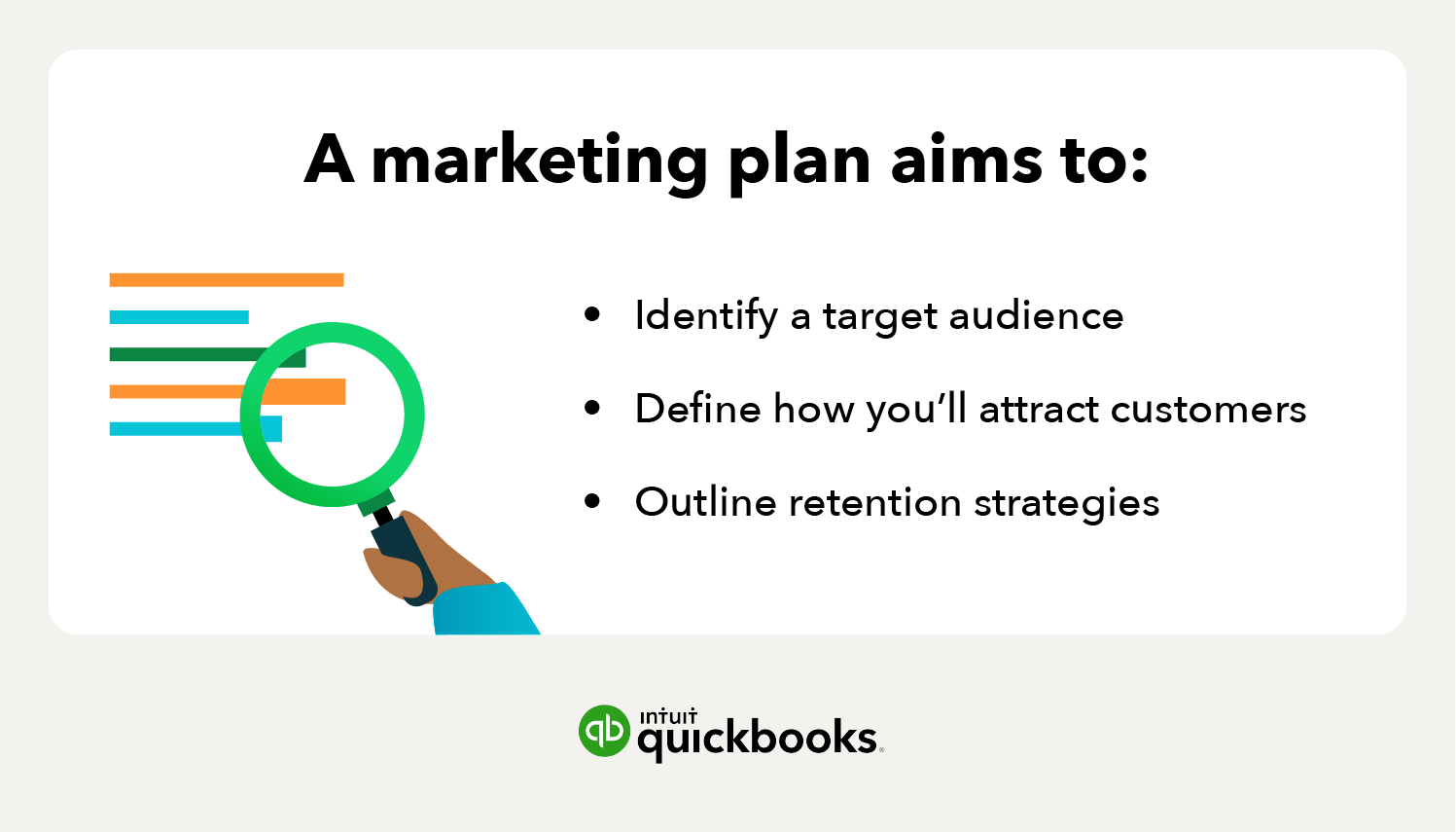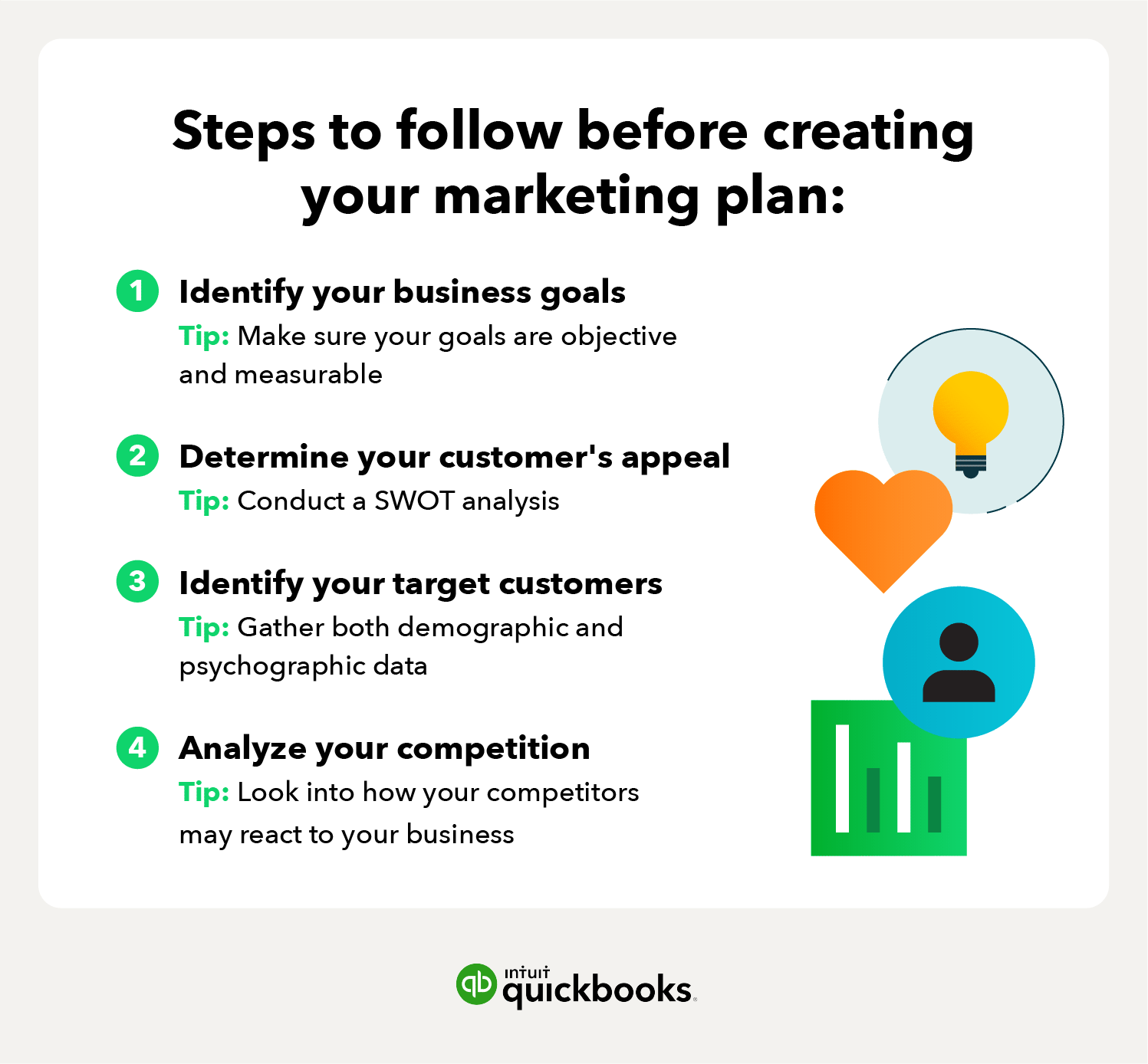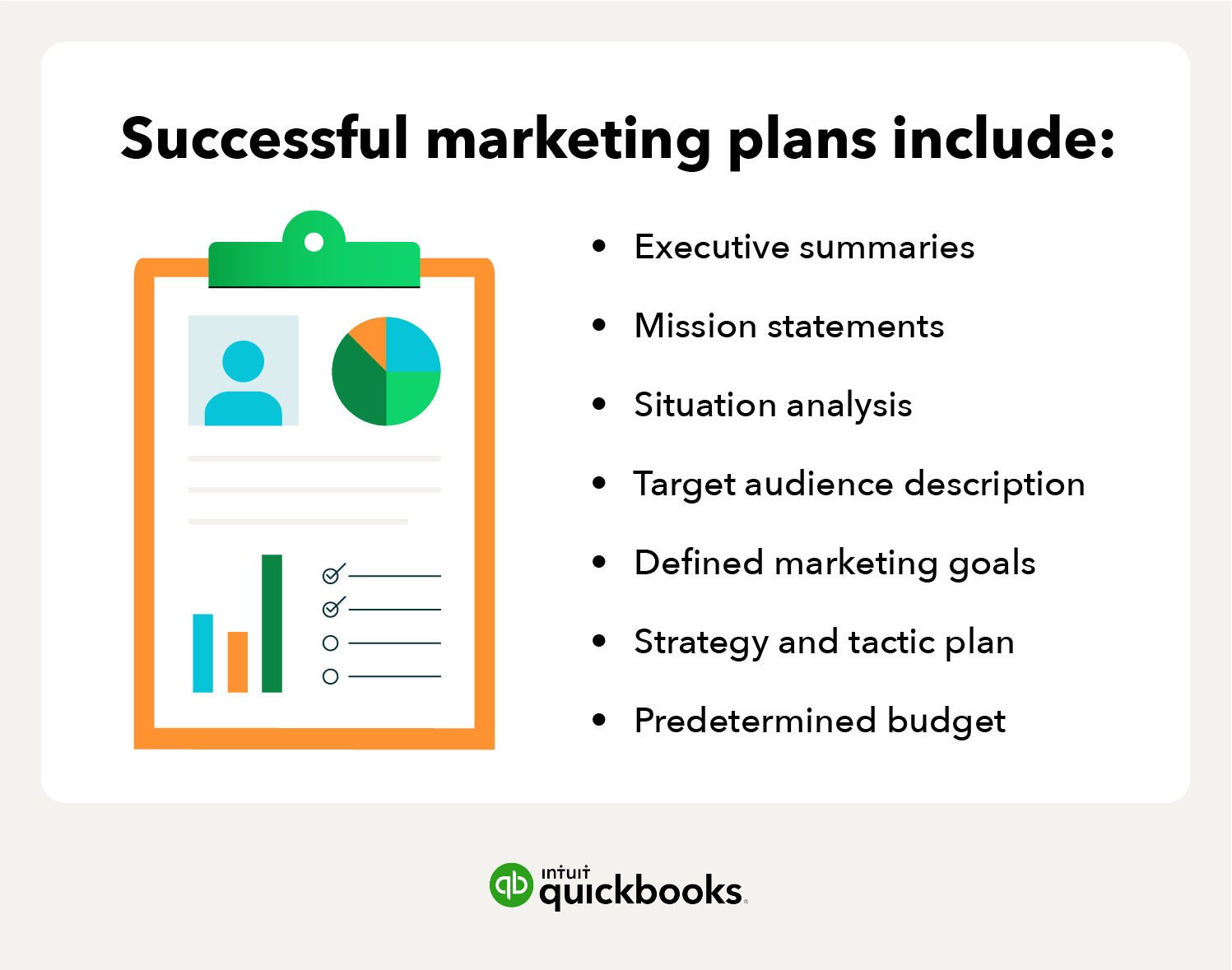Now that you’ve completed your data collection, you need to actually formulate your marketing plan. Here are the key features to be sure to include:
1. Executive summary
The executive summary is a breakdown of everything that’s included in your marketing plan. Although the executive summary comes first, you should complete it last when you’ve finished everything else on the list.
2. Mission statement
The mission statement is an analysis and summary of the goals you have for your business and should be included in your marketing plan. Although it should probably be similar, the mission statement you use for your marketing plan doesn’t necessarily have to be the same as your company’s overall mission statement.
When crafting a mission statement, consider including:
- What you want to accomplish
- Your reason for doing it
- The people you’re doing it for
3. Situation analysis
A situation analysis is an overview of your company’s current state. This is where you should include information such as what you’re selling, what separates you from competitors, and your company’s best practices.
The more information you can add here, the better. You’ll paint a clearer picture for the reader about what makes your company strong and what puts you at a competitive disadvantage.
Not only will you want to include information about your own company, but about other market influencers as well. This is also where you want to add your SWOT analysis.
4. Target audience description
You’ve done all the work to understand who your target customer is, so spend time writing out a description of this target audience. It should be as descriptive as possible. Don’t forget to include any psychographic data you might have as well.
Content marketing
If you choose to use the content marketing channel, you can tailor your content creation around the target audience you discover during your market research. You’ll know what resonates with them, and capturing that audience can be done by creating videos, blog posts, ebooks, studies, and more.
5. Marketing goals
Transfer the marketing goals that you came up with to this section. Remember, you want to make your goals measurable so that you can see results. Having goals allows you to track progress so that you can make adjustments if need be.
Email marketing
If you plan to run a digital marketing campaign through email marketing, your goals and objectives will be similar to a marketing plan, however, you’ll want to tailor this to your online presence.
For example, you may want to tailor your goals to driving more traffic to your website or planning a goal of spending X amount of your budget on online ad campaigns. You can do this by starting a monthly newsletter that can cover announcements about your sales, new products, recent happenings with your business, promotions, or other niche-specific topics your readers may find useful.
6. Strategies and tactics
Using your marketing goals as a blueprint, determine the strategies and tactics you’ll use to achieve them. These will include the different types of media you want to use and the various advertising or outreach tools you’ll use.
Spend time looking at your audience and determining the best way to reach them. Not every customer can be reached the same way.
You can use more than one marketing strategy to be more effective. For instance, maybe your digital marketing campaign involves using social media to reach your target audience. Don’t be afraid to utilize various distribution and social media channels when crafting your marketing plan.
Social media
If you plan to focus your marketing plan efforts on social media channels, you might consider practicing social listening. Do research around the name of your competition, social media account handles, and other relevant keywords on social media. Look into what they’re sharing and what others are saying about them.
7. Determine your budget
Your marketing budget will need to strike a balance between being high enough to make an impact but low enough not to wipe out your start-up fund. Gather costs for the tactics you outlined in step 6. If you have the option of working with multiple media outlets, gather a few quotes so you can compare and contrast their services and value.
















